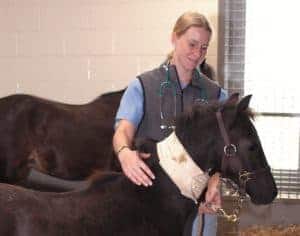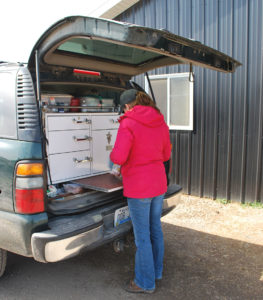Pay Close Attention to Nylon Halters, Leads During Post-Strangles Cleaning

“The rougher surface of the polyester material may make the polyester halters more amenable to S. equi survival in the presence of cleaning and sanitation compared to the others,” said Anneli Rydén, PhD candidate, a veterinary nurse and lecturer in veterinary nursing in the Swedish University of Agricultural Sciences Faculty of Veterinary Medicine, in Uppsala. “Hence, it appears that ensuring a washing temperature of (at least) 60°C (140°F) is necessary to eliminate live S. equi in fabrics such as polyesters.”
In their study, Rydén and her fellow researchers tested barn equipment in a laboratory setting, before and after subjecting items to various cleaning techniques. They experimentally contaminated wood, plastic, and concrete samples, as well as leather and nylon halters and leather gloves, with S. equi. They allowed the bacteria to grow for four days and then cleaned half the equipment. The other half they left uncleaned as a control for comparison.
Wiping down the wood, plastic, and concrete with soap, water, and a basic disinfectant eliminated all the bacteria, Rydén said. The untreated surfaces had just as high a level of S. equi contamination as before, even two days later
Create a free account with TheHorse.com to view this content.
TheHorse.com is home to thousands of free articles about horse health care. In order to access some of our exclusive free content, you must be signed into TheHorse.com.
Start your free account today!
Already have an account?
and continue reading.

Written by:
Christa Lesté-Lasserre, MA
Related Articles
Stay on top of the most recent Horse Health news with


















